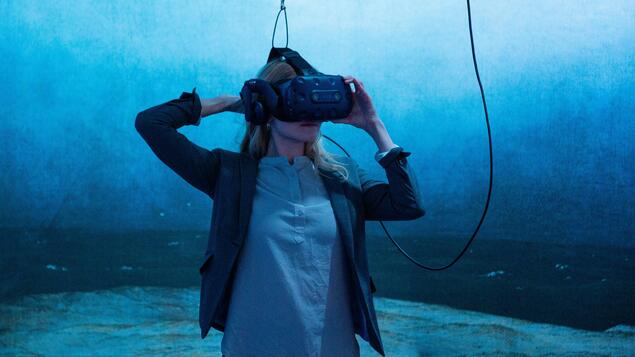Everyone who travels from the Venice Film Festival to the island of virtual reality – plague sufferers once inhabited the island of Lazaretto Vecchio off the Lido – feels like they’re in the clinic. The dedicated staff briefly guide visitors through the process in a friendly but tailored manner, remove your bag and shoes, attach your headset and VR goggles, and inquire about allergies and odor intolerances.
And oh Presto, you’re gone, in a parallel world emerging from the darkest night, where a hypnotic voice asks intimate questions. Do you live a life of self-determination? Have you ever had authority over someone? Was it fun or uncomfortable?
“Virtual reality is not more of a visual experience than it is a personal one,” says curator Liz Rosenthal. “Your presence is critical,” she adds.
It does not accept the objection that cinema is based on 120 years of film history and is a collective experience, while the virtual world brings extreme unity and requires gaming expertise. Referring to the 60-minute virtual reality show Loveset, which gathers 50 spectators in the hall and dozens more online. Actors and individual visitors create their own animations using Bluetooth controllers.
Experiment with silly content: a dating offer is made. The lavish performance of “The Cosmos Inside Us,” in which 14 participants, including several live musicians, lovingly engage in revealing family trauma before the inner eye of one bespectacled woman, does not surpass the psychology of the kitchen in terms of a play.
Venice is the only major festival that organizes virtual reality competitions with winners in lions, for linear and interactive work. Even if the technology still has its flaws and especially those who wear glasses, they have to accept blurry images: the genre distinguishes itself. In addition to real photo and animation works, performative, immersive, three-dimensional imaging and documentary variants are collected on the island. In “A Life in Flowers”, the user lets the brightly colored flowers sprout with a healing quest game and connect them to form a bouquet of individual souls. In The Collider, a real Chance is subjected to her partner’s own fantasies via a console – a very strange experience with her little-known Scandinavian colleague. And in The Key, you as a Syrian refugee save yourself in colorful galaxies with the key to the bombed-out apartment around your neck.
Those with a head for heights can take free flights, pierce the walls of the house on stilts like the ghost of the dead in Hsin-Chien Huang’s “Without a Body” or fly over the craters of the moon in Laurie Anderson and Huang’s “To The Moon”. Whether it’s galaxies or the depths of the oceans, the Taiwanese are technologically ahead anyway and creating the most adventurous 360-degree worlds. In the cinema, too, they have a particularly close relationship with ghosts.
Does virtual reality have a future? Always in theme parks and as a simulation technology for research and teaching, from pilot training to architectural designs to brain surgery. But as an art movie? In “Traveling While Black” you sit at the legendary Ben’s Chili Bowl in Washington, right across from a woman whose young son was shot dead by white police officers. Does the remarkable convergence lead to different visions of racism in the United States than the average documentary?

“Certified gamer. Problem solver. Internet enthusiast. Twitter scholar. Infuriatingly humble alcohol geek. Tv guru.”





